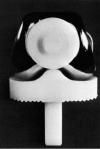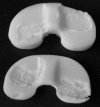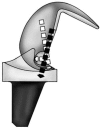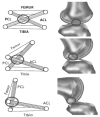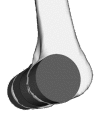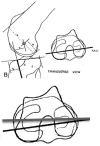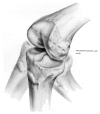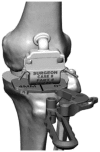Evolution of TKA design
- PMID: 28657559
- PMCID: PMC6178992
- DOI: 10.23750/abm.v88i2-S.6508
Evolution of TKA design
Abstract
The use of Total Knee Arthroplasty (TKA) in treatment of chronic degenerative pathologies of the knee boasts of an experience of 50 years. During this period the collaboration between surgeons and engineers produced many developments in the design of the prosthesis. Today this procedure is safe and established even if in continuous development. The progress in technologies and the use of new materials let researches try again old-fashioned techniques from the past in order to be improved. This enthusiasm for those discovers is not always going hand to hand with scientific validation: many open questions remains Every different concept of the design tries to answer to special needs as the reach of the highest ROM, the reduction of pain and debris, articular geometry, the type of fixation, the modularity of augments and stems, the types of constraints, knee kinematic and of course costs.
Keywords: Knee, arthroplasty, implant, design.
Figures
References
-
- Verneuil A. De la creation d’une fausse articulation par section ou resection partielle de l’os maxillaire inferieur, comme moyen de remedier a l’ankylose vraie ou fausse de la machoire inferieure. Arch Gen Med. 1860;15(ser5):174.
-
- Ferguson W. Excision of the knee joint: Recovery with a false joint and a useful limb. Med Times Gaz. 1861;1:601.
-
- Machintosh DL. Hemiarthroplasty of the knee using a space occupying prosthesis for painful varus and valgus deformities. J Bone Joint Surg Am. 1958;40:1431.
-
- Emerson R, Potter T. The use of the McKeever metallic hemiarthroplasty for unicompartmental arthritis. J Bone Joint Surg Am. 1985;67:208–212. - PubMed
-
- De Nicola U, Pace N. La protesi di ginocchio di primo impianto. Edizione Springer; pp. 29–44.
Publication types
MeSH terms
LinkOut - more resources
Full Text Sources
Medical
Miscellaneous


